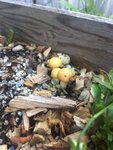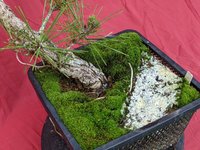Wires_Guy_wires
Imperial Masterpiece
It is actually! Those flies get one set of instructions from the fungus: Kill all wing motor skills, and walk to the highest point you can find, then clamp down like there's no tomorrow.Im not sure if there's a connection there beyond the branches providing a clear vantage point for the fungus, but coincidencental nonetheless.
Last year I found a couple and I monitored them for a couple weeks, it took 6 weeks for them to finally drop off.
The fact that you're in North Carolina makes me think a jack-o-lantern is unlikely, they're known to live in California and Mexico. But yellow/golden oyster mushrooms should only live in Europe, and I know they're being grown in the US too. If you can wrap some tinfoil below the brackets, and leave those for an hour or two, then you'll probably be able to identify the spore color. It would make things a lot easier. Breaking off a piece and seeing if it changes color when exposed to air can help a great deal too.
If you have a lye-type drain cleaner, NaOH of KOH, then a few drops of it on exposed tissue will probably give you enough to identify it completely, if you have a identification key for your area.
























